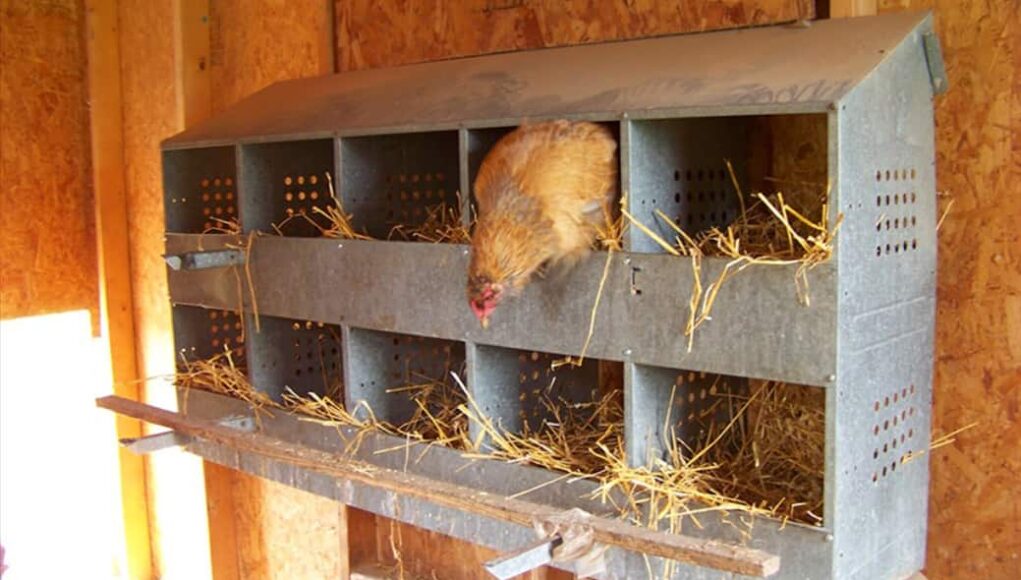When it comes to creating a harmonious and efficient environment for chickens, permaculture nesting designs play a crucial role. These designs not only focus on the well-being of the chickens but also align with sustainable and eco-friendly practices. In this article, we will explore the principles of permaculture and how they can be applied to nesting designs for chickens.

Understanding Permaculture
Permaculture is a design philosophy that emphasizes the creation of sustainable and self-sufficient agricultural systems. It takes inspiration from natural ecosystems and aims to mimic their efficiency and balance. By incorporating permaculture principles, chicken keepers can create nesting designs that promote the health and productivity of their flocks.
Key Principles of Permaculture Nesting Designs
1. Observation and Interaction
Before implementing any design, it’s essential to observe the chickens’ behavior and understand their needs. By spending time with the flock, you can gain valuable insights into their nesting preferences, such as the preferred location, materials, and dimensions of the nesting boxes.
2. Use of Natural Materials
Permaculture encourages the use of natural and locally sourced materials. For nesting designs, this means using materials like straw, wood shavings, and organic bedding. These materials not only provide comfort for the chickens but also decompose naturally, enriching the soil in the process. For more information on organic bedding, check out this link.
3. Integrating with the Environment
Permaculture nesting designs should complement the surrounding environment. This can be achieved by positioning the coops and nesting areas in locations that receive adequate sunlight and ventilation. Additionally, incorporating plants and trees around the coop can provide shade and protection from predators.
Designing the Perfect Nesting Box
4. Size and Dimensions
The size of the nesting box is crucial for the comfort and well-being of the chickens. It should be spacious enough for the chicken to move around comfortably but not too large that it feels exposed. A typical nesting box should measure around 12×12 inches and be positioned at a height that is easily accessible for the chickens.
5. Ventilation and Drainage
Ensuring proper ventilation and drainage is vital to prevent the buildup of moisture and odors in the nesting area. This can be achieved by incorporating mesh or wire openings in the boxes and ensuring that the coop is well-ventilated.
6. Predator Protection
Protection from predators is a critical aspect of nesting design. Use sturdy materials for the coop and ensure that all openings are secure. Additionally, consider elevating the nesting boxes to prevent ground predators from accessing them.
Incorporating Permaculture Principles in Nesting Designs
7. Zone Planning
Permaculture encourages the concept of zoning, where different areas of the farm or garden are designated for specific functions. When designing nesting areas, consider placing them in a zone that is convenient for regular egg collection and maintenance.
8. Rotational Grazing
Rotational grazing involves moving chickens between different areas of the yard or garden. This not only prevents overgrazing but also naturally fertilizes the soil. Incorporating mobile nesting boxes can facilitate this practice.
9. Companion Planting
Integrating plants and herbs around the nesting area can enhance the chickens’ environment. Certain plants, such as lavender and mint, can repel pests and provide a calming aroma for the chickens.
Benefits of Permaculture Nesting Designs
10. Sustainability
By using natural and locally sourced materials, permaculture nesting designs promote sustainability and reduce the ecological footprint of chicken keeping.
11. Improved Chicken Health
A well-designed nesting area contributes to the overall health and well-being of the chickens. Proper ventilation, predator protection, and a clean environment reduce the risk of disease and stress.
12. Enhanced Egg Production
Happy and healthy chickens are more productive. By providing a comfortable and safe nesting environment, you can expect a steady supply of fresh eggs.
Implementing Permaculture Design in Your Coop
13. Start Small
If you’re new to permaculture, start by making small changes to your coop’s design. Gradually incorporate natural materials and observe how the chickens respond.
14. Seek Community Resources
Join local permaculture groups or online forums to learn from other chicken keepers. Sharing experiences and tips can help you refine your nesting designs.
15. Continuously Observe and Adapt
Permaculture is an evolving practice. Continuously observe the chickens and their environment, and be willing to make adjustments to improve the nesting area.

FAQs on Permaculture Nesting Designs
What materials are best for nesting boxes?
Natural materials like straw, wood shavings, and organic bedding are ideal for nesting boxes as they provide comfort and decompose naturally.
How can I protect my chickens from predators?
Use sturdy materials for the coop and ensure all openings are secure. Elevating the nesting boxes can also help prevent access by ground predators.
Why is ventilation important in nesting designs?
Proper ventilation prevents the buildup of moisture and odors, creating a healthier environment for the chickens.
For more creative ideas on nesting box designs, visit The Chicken Tractor.
This article contains affiliate links. We may earn a commission at no extra cost to you.











